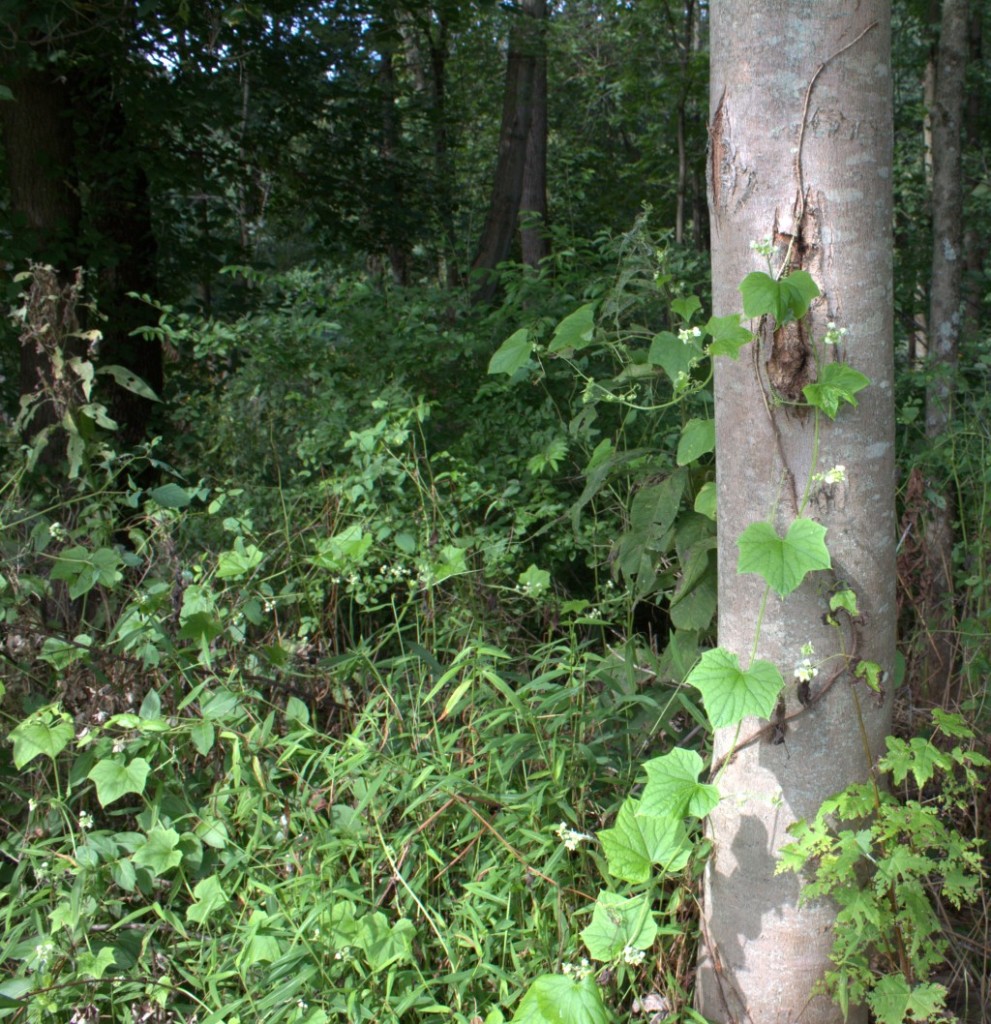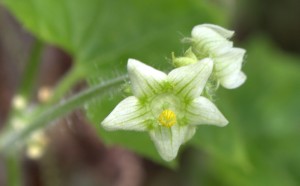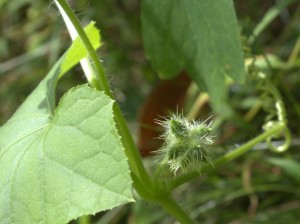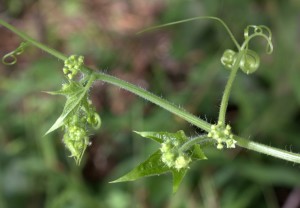A walk in the park took us through a section of trees that were left standing next to the river. The trail followed the river and at a clearing there was this flowering vine that held fast to a tree trunk.

This vine was growing in an area at the edge of woods where it received partial sunlight, morning sun for sure.
The vine snaked through the grass, scrambled over some weeds about knee-high, and then climbed up a tree for a few feet.
Curly tendrils helped the long plant fasten itself to vegetation as it grew.

(Photos taken 23 August 2015. Click on any image for a larger view.)
Several small white flowers were grouped together each with five broad petals that gave each blossom a star-like appearance.
The flowers had yellow stamens that noticeably stuck out into the air. Petals were lined with green parallel lines pointing toward the center of the flower.

The plant had obviously been flowering for some time as these strange bristly fruits were also present. The fruit is a grouping of several nuts or seeds in green pods having long bristles.
The whole plant is sort of bristly. All stems and tendrils are covered with short to very long glass-like hairs. The edges of the sycamore-like leaves are toothed and the back of the leaf is rough to the touch.

Looking more closely at the tip of the plant we could see another set of flowers. This time the flowers were tiny and in a random cluster that didn’t resemble the larger star-like flowers.
It turns out that there are two kinds of flowers on some plants and this vine is just such a plant.
The larger flowers with the star-like shape and the projecting stamens are called the staminate flowers. At the tip of the stamens are the pollen-coated anthers that provide pollen to fertilize the second set of flowers. The staminate flowers might be referred to as the male flowers.
The tiny flowers are called pistillate flowers because their contribution to the next generation is the pistil where the seed develops. Pistillate flowers are female and so require the pollen from the male flowers to become fertilized.
Many plants have the female (pistil) and male (stamen) parts in the same flower, but the Bur-Cucumber is a flowering plant with the sexes on separate flowers.
The leaves are palmate and appear like maple tree leaves or pointy sycamore tree leaves.

Each broad leaf has two sets of flowers arising from its axil. The smaller pistillate flowers lie nearer the main stem than the star-like staminate flowers. Note the bristly fruits starting to develop from the pistillate flowers.
Although it’s a member of the Cucumber or Gourd Family, Cucurbitaceae, the Bur-Cucumber, Sicyos angulatus, isn’t edible nor does it appear to have medicinal qualities.
Still, it was an interesting plant to see at the edge of the woods. Three weeks after these photos were taken in late August the flowers were dried out and the entire vine was beginning to wither.